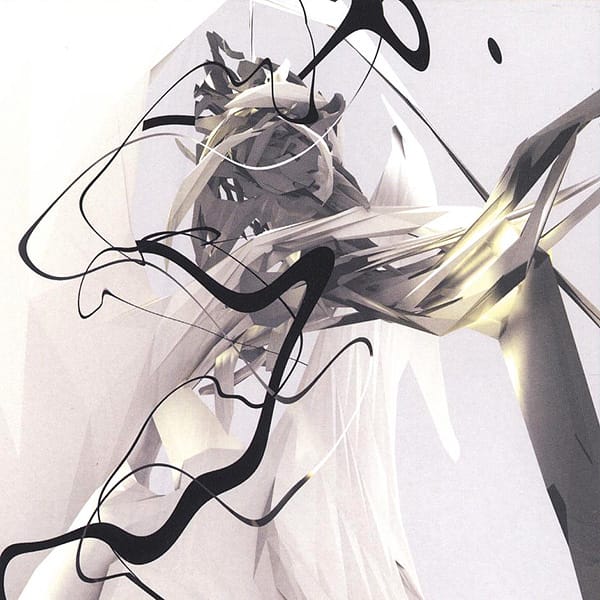If writing about music is like dancing about architecture, how about making pictures about it for sleeve art? Tom Scholefield unravels the cover of Autechre's Draft 7:30 Selecting one record sleeve that's influenced my work is a tricky job. After a bit of thought I came to a logical conclusion that it has to be Alex Rutterford’s design for Autechre’s album Draft 7.30 (Warp Records, 2003). This record was my first introduction to Autechre – I hadn't really heard their early more ambient productions and the complexity and abstract funk of this record blew me away. To me, it was music from the future or from outer space, completely alien to anything that I'd ever heard before. I couldn't quite grasp where the influences came from at the time.
When I listen to the record it conjures up all sorts of abstract shapes and colours in my imagination that represent the sounds. The image on the sleeve design could quite easily be a 3D graphical representation of a certain section of one of the tracks. For example the stuttering poly-rhythmic decaying break down of the track Xylin Room. I think it was around this time that I saw Gantz Graf, the video also created by Rutterford. It takes the idea of music visualisation to the next level. I can't actually fully appreciate the track without watching the video – in my imagination the music and video is one piece of work.
On a personal level, this really got me thinking about how to represent music visually when I get asked to design a record sleeve. However I adopted a far less direct approach in terms of trying to come up with a purely graphical solution. I got more into trying to create visual worlds that the music could exist in if it was an object. Very much like if a director was asked to create a film based on the music.
March 20, 2014 2 minutes read
Look Listen
If writing about music is like dancing about architecture, how about making pictures about it for sleeve art? Tom Scholefield unravels the cover of Autechre's Draft 7:30

